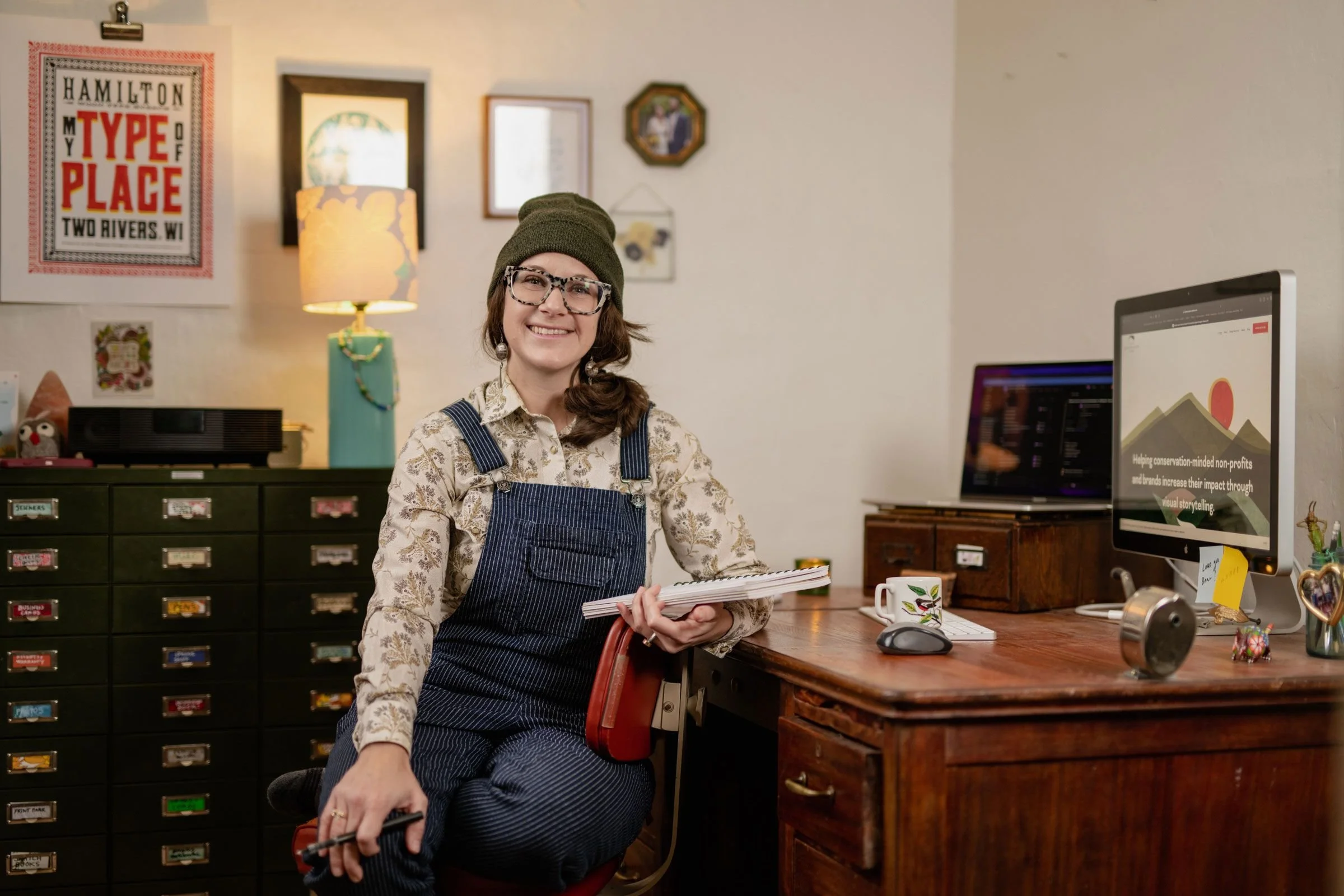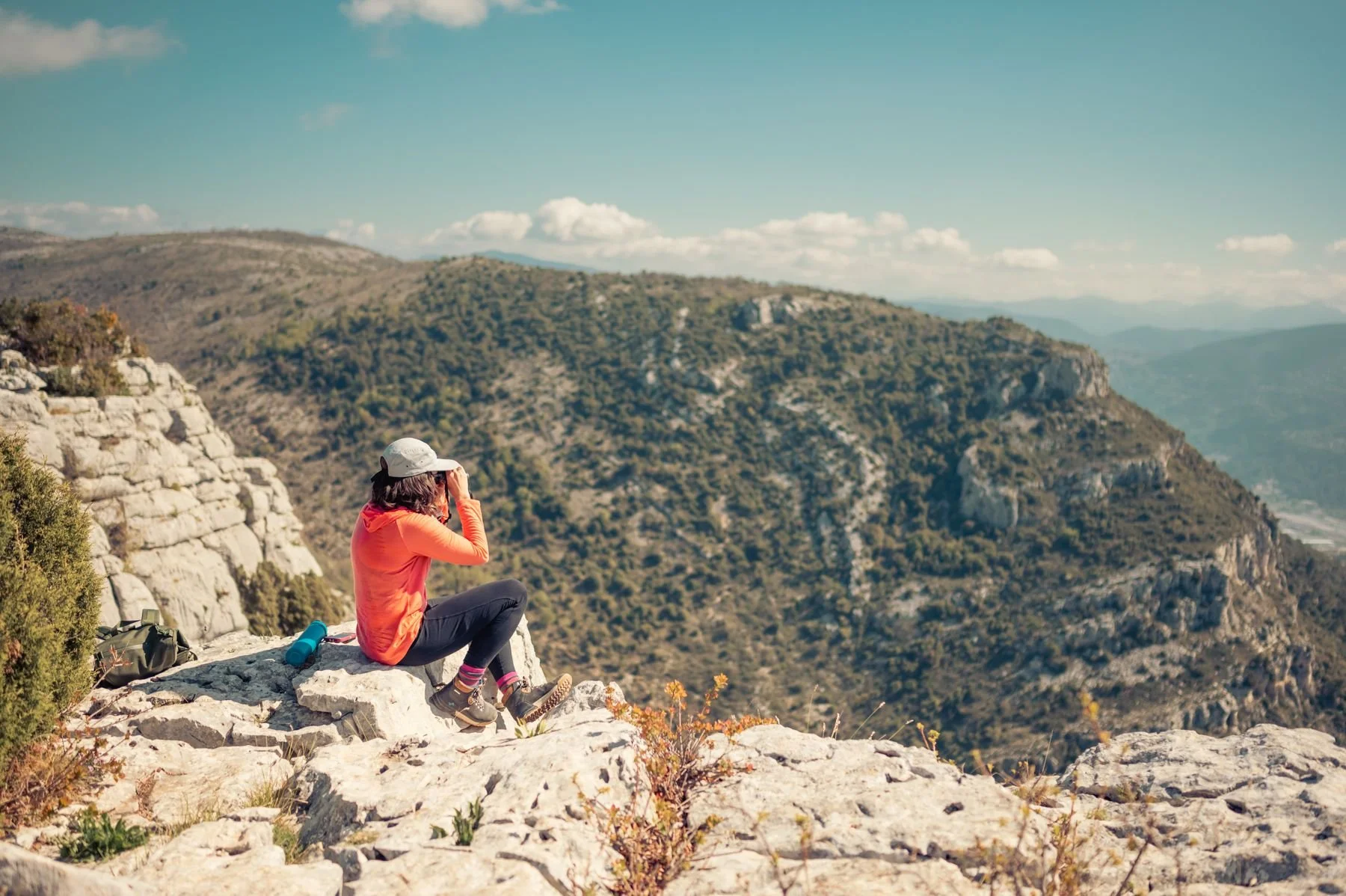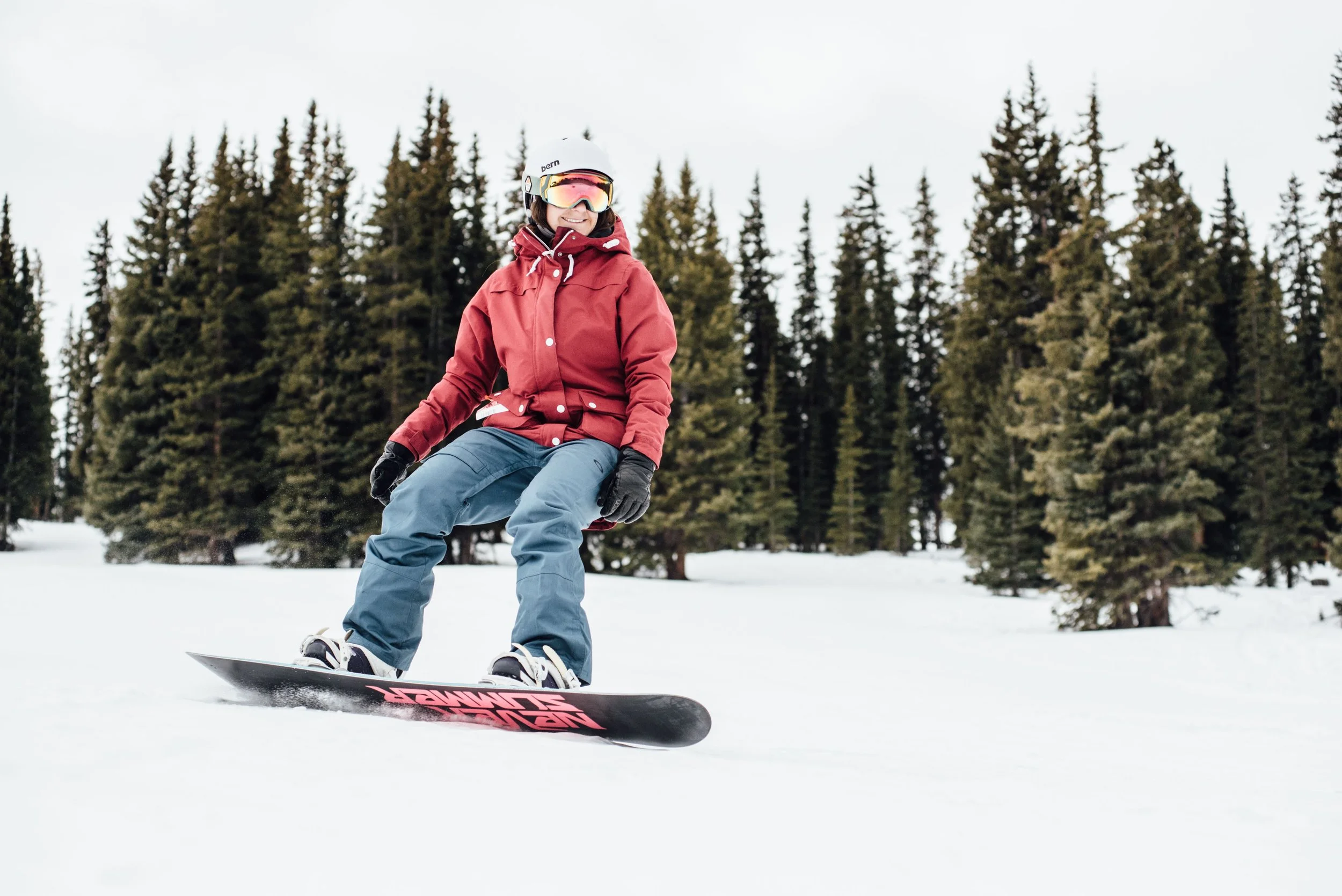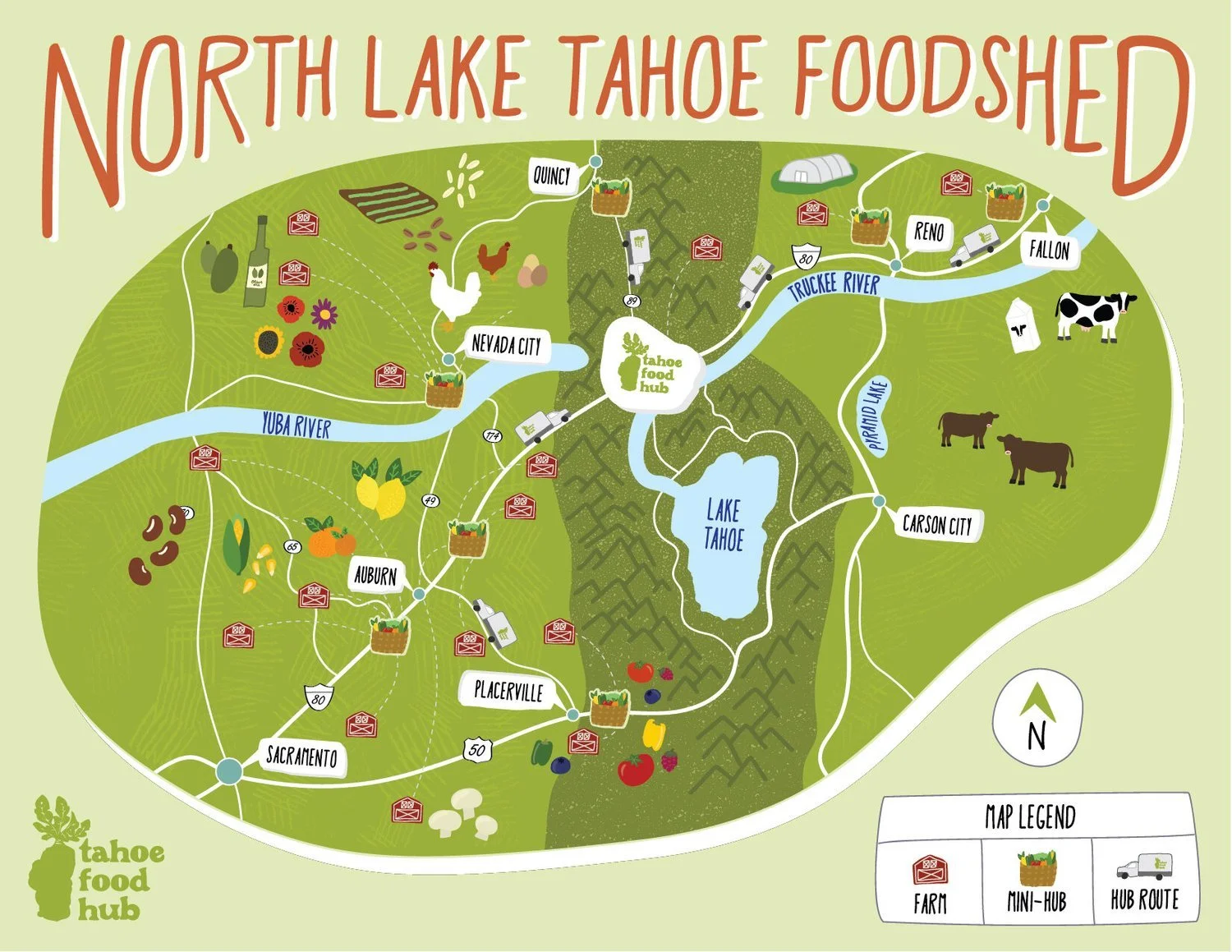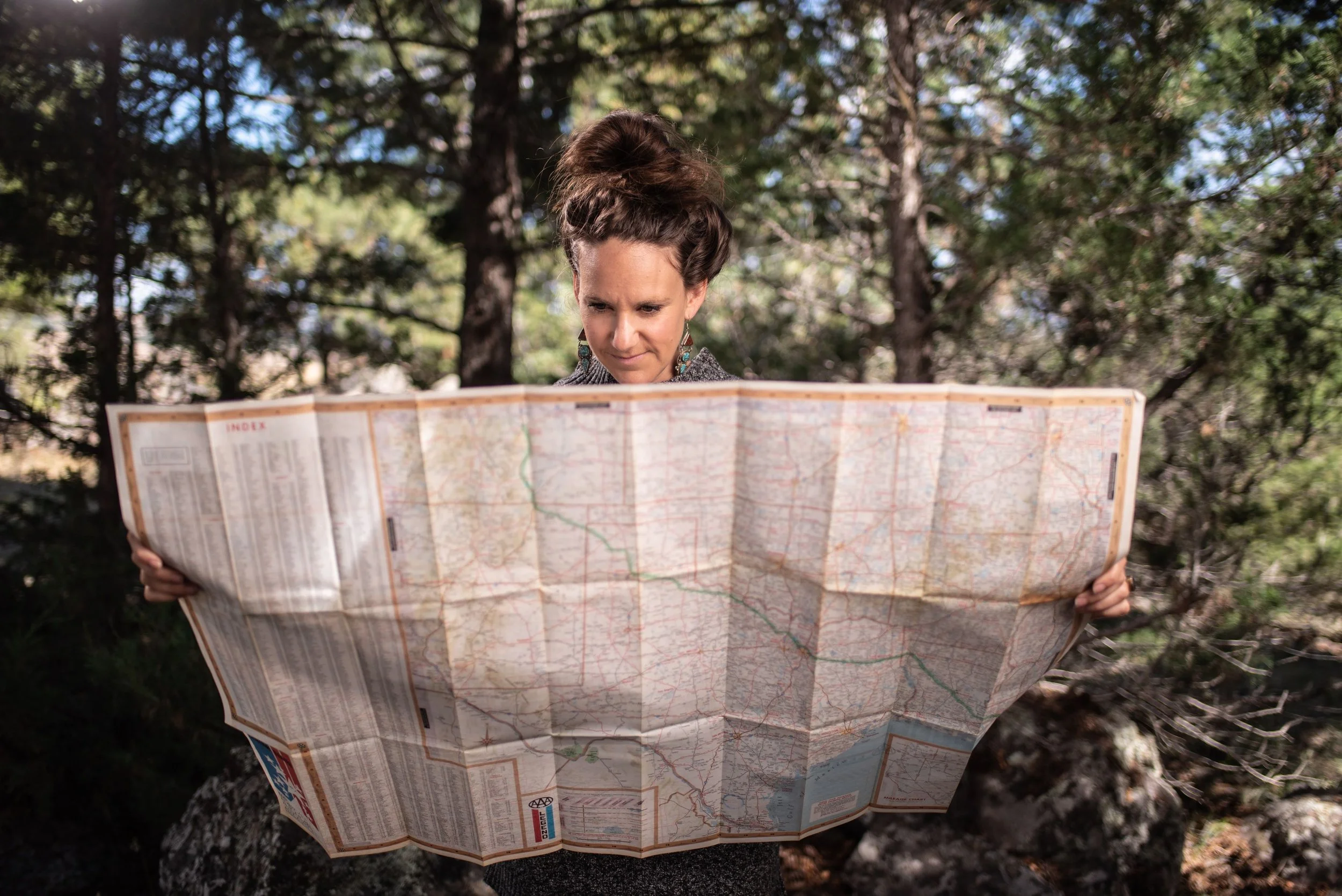High Mountain Creative: Interview with Unseasoned, by Emerald LaFortune
I was recently interviewed by Emerald LaFortune for her series called Unseasoned. I’m excited to share the interview!
Unseasoned is a series interviewing folks who leave behind outdoor seasonal gigs for 9-5s, entrepreneurship, or other year-round work. You can read more about the premise here.
This month we welcome Margo Stoney, a seasonal snowboard instructor and outdoor recreation surveyor turned creative director, graphic designer, and business owner.
Margo believes great design can help save the planet, loves to travel, and once dreamed of designing graphics for a snowboard (though she’ll settle for meeting Shaun White and working alongside Red Bull). And yes, Margo can help your non-profit with that annual report or infographic when the intern + Canva just isn’t cutting it (note from Emerald: don’t fool yourself… it’s not cutting it)!
“If you have something that you feel really connected to, then it makes your work feel more valid to you. For me it's the outdoors and trying to save the planet. That focus makes me feel more inspired and happy and motivated to be doing the work.”
Photo: Isaac Miller Photography
EMERALD: Tell me about a great “day in the life” in one of your past outdoor seasonal roles.
MARGO: I love this question because it made me remember a job that I had I had forgotten about. The Forest Service in conjunction with Chico State University in California was looking for people to do what they call national visitor use monitoring surveys. I was already somewhat pre-qualified from having experience doing marketing surveys at Vail Resorts, so I got this job.
Basically all summer I went around to different recreation sites in the Tahoe Basin. I went to beaches, trailheads, wilderness areas, trail heads, campgrounds, things like that. I would sit there in a camp chair with a folding table filling out questionnaires as I interviewed people about their experience recreating in the National Forest. It was just to give the Forest Service data and information about visitor use – how long they were visiting, what they were doing, demographic information, etc. Some days, the locations were really busy and it'd be nonstop talking all day for eight hours.
Then on other days, I could be in a spot that might be out in a quiet wilderness area. I just got paid to sit at this table and basically be in nature. Every once in a while a person would come by and you ask them if they would take a survey and if they did, you spend five minutes talking to them. Then you got to go back to just relaxing in the forest and getting paid for it.
EMERALD: What was the hardest part of outdoor seasonal work for you?
MARGO: I was raised in the Midwest and there's a lot of culture around working hard. If you're having fun at your job, you're not working hard enough. Or there is this trajectory of go to school, go get a job, work your way up the ladder. For a while I had this guilt of not having a full time job doing what I’d studied… I went to school for graphic design. I was always doing freelance design, but to not have a full-time job working in my field of study felt like a detour.
When I was doing seasonal work it was a balancing act because I was always working two part-time jobs. One of them was seasonal and one of them was year round. And then I was also freelancing. Just remembering what I had to do each day was exhausting! But also, I was like 24 or 25 and so I had the energy for that. I don't know how I did it.
EMERALD: What were you most worried about when leaving seasonal work? Did those fears actualize?
MARGO: I think I was most worried about not having the shoulder season to travel. When I did take a full-time job, after a few years, the reason I ultimately wanted to quit that job was so that I could work for myself and travel. It was something that was always in the back of my head and then when I didn't have those opportunities anymore, it felt really limiting to only have two weeks a year to travel and then also try and balance visiting my family that lived on the other side of the country.
“When I did take a full-time job, after a few years, the reason I ultimately wanted to quit that job was so that I could work for myself and travel.” Photo: Isaac Miller Photography
EMERALD: How did you end up in your current role?
MARGO: It was honestly a zigzag. I had started freelancing - almost 20 years ago now - and it was always sort of something that I did on the side. Just when I thought I was ready to start freelancing full-time, I had gotten burned by a couple of clients and had a few contracts go really wrong. After this, I definitely didn’t feel like I was ready to take the plunge, so I made the decision to transition from a part-time role to a full-time job at Heavenly, only keeping a few freelance clients. So then I was working, full-time year round in-house doing marketing and then eventually design.
But then in 2013, I'd taken my first trip to Europe and came back thinking, “Oh my gosh, I just spent my whole vacation time and savings to go on this 10 day trip and it just wasn't enough.” That was the tipping point.
I also felt ready because I had gained all this great experience working in-house with some really smart marketing folks. I got to learn more about marketing and strategy and how design fits into the big picture of everything, not just what they teach you in art school. Having the role at Heavenly really gave me that skill and confidence to help me translate design into doing the work for things I love and the outdoors.
EMERALD: How would you describe being a Creative Director to somebody who's not familiar with graphic design, marketing, et cetera?
MARGO: I only recently started referring to myself as a Creative Director – which is funny because I’m my own boss and can give myself whatever title I want. As my client base grows, I’ve begun subcontracting design and studio help which has really forced me to transition from thinking as a graphic designer to thinking as a Creative Director. To me, a Creative Director develops ideas and a creative vision then works with a team to execute that vision. They have to have the confidence to make design decisions, be a good leader and share crucial feedback.
EMERALD: Was your seasonal experience a help or a hindrance in securing your current position?
MARGO: It was a huge help. I learned about graphic design when I was in high school, at the time, I was just getting hardcore into snowboarding and I knew I wanted to do graphic design for a snowboard company. I have resume cover letters and college applications from when I was a teenager where I'm just like, “This is all I wanna do.” Having these seasonal jobs, teaching snowboarding and working in ski towns gave me a ton of great experience and helped me get to know the industry and understand my audience. It helped me better develop my skills for the type of people that I wanted to do design work for
I think creating the connection with the outdoors through these seasonal jobs and learning about the outdoor industry was really helpful.
“I learned about graphic design when I was in high school, at the time, I was just getting hardcore into snowboarding and I knew I wanted to do graphic design for a snowboard company. I have resume cover letters and college applications from when I was a teenager where I'm just like, ‘This is all I wanna do.’” Photo: Isaac Miller Photography
EMERALD: How did your family (defined broadly as any intimate familial, romantic, or platonic connections) interact with your seasonal work?
MARGO: I don't think it really affected them. I was going to move away from Michigan anyway, whether or not I had a seasonal job. So I think if anything it was maybe more of an opportunity because I was able to take off long chunks of time to visit family. It was sort of a bummer missing holidays like Christmas and Thanksgiving, because obviously those are the big, big ski resort holidays, so taking time off was out of the question. But it was nice to have those longer periods during off season to be able to visit friends and family and things like that.
EMERALD: Are your relationships different now that you are in a year-round role? If yes, how so?
MARGO: My life is so different now in general, so I'd say it's kind of hard to say what can be attributed to a seasonal role. I think freelancing and entrepreneurship can feel a lot like a seasonal role because of the unpredictability and stress of work and income. You’re often wondering what you’re going to do next and if you're going to do the same thing next year or next season.
Now I'm probably just a lot more stressed out now in general because I'm not 24 anymore and it's like, “Oh, I have to actually sort of have my life together!” If I was in the place I am in my life now and I was doing seasonal work, I could see where it would be very difficult. I'm married, we live in a house and we have a dog. I had so few cares back then. I didn't have a boyfriend or a relationship or anything. I was doing what I wanted to do, so it was a good time to be doing it.
EMERALD: How did moving from seasonal work to a year-round opportunity change your financial situation?
MARGO: This wasn’t totally day and night for me because I went from having two part-time jobs that paid maybe like $10 to $13 an hour plus a few hundred dollars a month from freelance income to having one full-time job that made me $15/hr. This was back in 2009, 2010. Having more security with consistent hours and good health benefits was definitely a bonus. I was also lucky enough to have opportunities for professional development, promotions and raises. I felt those were more available to me as a year round full-time employee than as a seasonal person where you just get treated differently.
EMERALD: You say your design work is, “dedicated to saving the planet.” Why is visual information important in achieving that goal?
MARGO: To me it's about making really detailed information more easily accessible to a broader audience. So if you think about especially concepts around climate change and carbon emissions and recycling… Some of these topics can be really convoluted or complex. Or some of them are written in studies by scientists and they're in basically a different language.
I like to think that I use design to help make these ideas and concepts more accessible, more fun, more visual, and easier to share with a broader audience.
An infographic designed by Margo
EMERALD: I admire your work because you are clear about the niche you work within. What would you recommend for freelancers or other folks who are trying to figure out their focus within a broader industry?
MARGO: It can be scary niching down because you think, “Okay, there's a smaller pool of clients and a smaller pool of work.” But then you can get really good at that one thing that you're doing. So for me, I do a lot of work with nonprofits and conservation groups around the environment and sustainability. At this point, I have a lot of tools and knowledge to offer my clients within my niche. When a nonprofit comes to me and they say, “We need to do an annual report,” or, “We want this infographic for a postcard,” I can say, “Oh great, I've done that before. I have some great ideas for you.” Whereas if I wasn't specializing in a certain industry, I would be starting from scratch every time. The ability to niche down makes you really, really valuable to your clients.
Also if you have something that you feel really connected to, then it makes your work feel more valid to you. For me it's the outdoors and trying to save the planet. That focus makes me feel more inspired and happy and motivated to be doing the work. I feel the camaraderie with my clients. It’s like, “Okay, we're gonna work on this together and we're going to talk about these rivers and why we need to clean them up and who's gonna take care of it.”
EMERALD: What does “dream job” mean to you? Has this definition changed?
MARGO: My dream job for most of my school age years and through most of my twenties was to do graphic design for a snowboard company. I still have not gotten to design a snowboard, which is okay! Working for Heavenly felt like a dream job. I got to meet Shaun White, I got to design cool event posters with Red Bull. And at the time it felt like a dream job. Of course, since then, my dreams have changed. Now I'm more interested in having freedom with my schedule, having flexible hours, and taking on the types of projects that allow me to work with nature and outdoors and sustainability.
I also want to collaborate with people who are fun to work with and where there's mutual respect. Those are aspects of my ideas around a dream job now. It’s cool because I can really curate that with running my business by choosing what clients and projects I take on and who I work with. Sometimes dream clients don't turn out to be dream clients because the actual working relationship is just a bad fit; maybe they're not fun to work with, or maybe the contact person has a personality that just doesn’t mesh.
I think my dream job is always changing, but it's a lot easier when you’re not in one single role. You have that flexibility to change things when needed.
“Now I'm more interested in having freedom with my schedule, having flexible hours, and taking on the types of projects that allow me to work with nature and outdoors and sustainability.” Photo by Isaac Miller Photography
EMERALD: If someone in outdoor seasonal work is interested in shifting into a more year-round role, what would you suggest they consider? Why?
MARGO: I'm basing this on my experience. I know that seasonal work can be very time consuming and I was lucky because I said I had a couple of part-time jobs and so it was easy for me to pivot and take on freelance work. I could build up my business a little bit while I was doing that seasonal work.
The seasonal work I was doing was not designing. And so it was really nice to not be drained working an in-house design job while also trying to build my design business. I would say take advantage of your time doing seasonal roles. If you have that energy to build your business on the side, do it, because it’s a good opportunity to not get too burnt out on doing one single thing.
Also, value the unique experience you gain from your seasonal gigs. Like I mentioned before, none of my seasonal work was related to design, but in the big picture those roles helped me gain experience. They made me tough and flexible and well-rounded and humble. All of these other jobs that I was doing were building these skills and fueling the fire to eventually be a really well-rounded business professional.
EMERALD: Imagine you’re eighty years old, retired, living your best life. In three - five sentences, describe the scene.
MARGO: I'm in a foreign country, in a quiet village somewhere between the beach and the mountains. Every morning I walk around the little village with my husband and our dog, Rico #5 (because we have Rico #1 now). I say hi to friends before sitting down at a cafe to read a magazine or sketch a nearby pigeon. I have just enough money for the things I need and all the time in the world.
Past Non-Seasonal Roles
Heavenly Mountain Resort, Marketing Coordinator turned Graphic Designer
Signature Galleries, Art Sales Consultant (Note from Margo: I was soooo bad at this job)
Colorado Mountain News Media, Senior Graphic Designer
Past Seasonal Roles
USFS with Chico State University, National Visitor Use Monitoring Survey Conductor
Heavenly Mountain Resort, Consumer Insights Lead/On-Mountain Marketing Surveyor
Snowboard Instructor, Beaver Creek, Cannonsburg Ski Area, Mt. Brighton Ski Area
Education & Certifications
BFA in Graphic Design from Kendall College of Art & Design
You can see the original published article and subscribe to read more from Emerald Substack by subscribing to The Emerald Lens on Substack.
I’m Margo! A graphic designer who works with conservation-minded nonprofits and brands on projects like logos & branding, annual reports, maps, and infographics. I work with my clients to create beautiful and meaningful design that amplifies the marketing efforts it takes to ignite action and change. Visit my portfolio to see some of the projects I’ve collaborated on with nonprofits to protect the environment.

